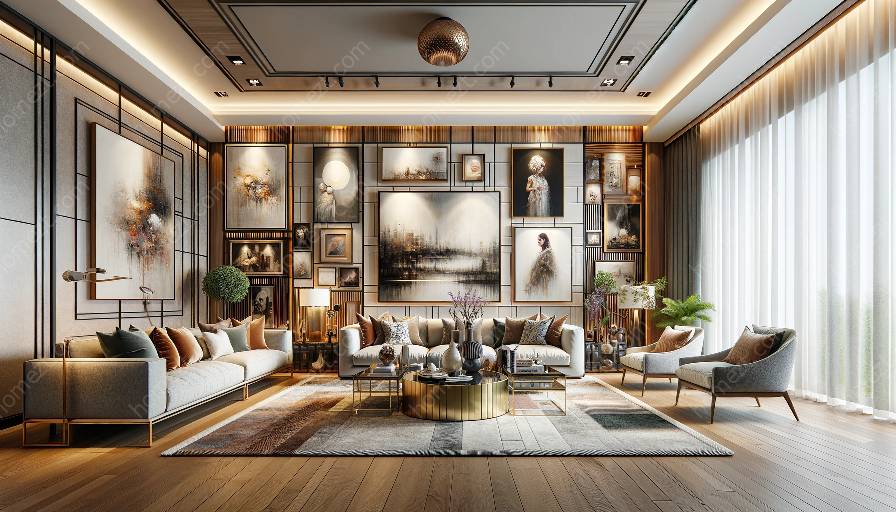When it comes to interior design, decorative elements play a crucial role in transforming a space and creating a unique atmosphere. Whether it's art, ornaments, textiles, or other decorative items, these elements have the power to elevate the aesthetics and ambience of any room.
Understanding the Impact of Decorative Elements
Decorative elements can significantly impact the look and feel of a room. They add personality, warmth, and character, making a space more inviting and aesthetically pleasing. In particular, art has the ability to evoke emotions, spark conversation, and serve as a focal point. Whether it's a striking painting, a captivating sculpture, or a beautiful tapestry, art can transform a room into a gallery-like space.
Decorating with Art
Art is a powerful decorative element that can dramatically change the ambiance of a room. It provides a personal touch and adds visual interest to any space. When decorating with art, consider the following tips:
- Choose artwork that resonates with you and complements the overall style of the room.
- Use art to create a focal point or anchor a design scheme.
- Experiment with different sizes, shapes, and mediums to add variety and depth.
- Consider the placement and lighting to enhance the impact of the artwork.
Decorating with Decor
Besides art, other decorative elements such as textiles, vases, figurines, and decorative mirrors also play an important role in interior design. These elements can be used to add texture, color, and visual interest to a space. When decorating with decor, keep the following in mind:
- Mix and match different decorative items to create a layered and dynamic look.
- Consider the scale and proportion of the decor to ensure it complements the overall design.
- Use decorative elements to highlight and enhance specific features of the room.
- Consider the visual impact of different materials and finishes when incorporating decor into the space.
Incorporating Decorative Elements Into Your Space
When incorporating decorative elements into your space, it's important to consider the overall aesthetic and functionality of the room. Start by identifying the focal points and areas where decorative elements can have the most impact. Additionally, consider the following:
- Choose decorative elements that reflect your personal style and preferences.
- Create visual balance by distributing decorative items evenly throughout the space.
- Experiment with layering and clustering to create a visually engaging environment.
- Utilize decorative elements to emphasize the architectural features of the room.
The Impact of Transformative Decor
The transformative power of decorative elements lies in their ability to enhance and personalize a space, creating a distinctive and inviting environment. Whether it's through art, decor, or a combination of both, these elements can elevate the aesthetics of any room and leave a lasting impression on its occupants.
Conclusion
Decorative elements are essential in interior design, offering a myriad of opportunities to transform and elevate any space. Whether it's through the use of art, textiles, or other decor items, these elements have the power to add personality, depth, and character to a room. By understanding the impact of these elements and incorporating them thoughtfully, you can create a visually stunning and enchanting environment that reflects your personal style and enhances your everyday living experience.






































